Can I put my hot tub on a gravel base?
Yes. Gravel is a fantastic base for hot tubs as it permits the drainage of water while being strong enough to handle the high burden of a hot tub. Gravel also has a nice aesthetic look and can add to your outdoor space along with your hot tub.
Stop wasting time and money with hot tub maintenance and confusing water chemistry! The Hot Tub Handbook and Video Course will help keep your hot tub balanced, sanitized, and crystal clear all the time.
Check out my list of high-quality hot tub products to help keep your hot tub clean and running great all year long!
An insulated ground mat is a fantastic choice to protect an inflatable hot tub. It will also assist with insulating material, reducing heat reduction throughout the bottom of your spa, and adding protection into the base from sharp gravel.
A year ago, one of my friends was looking to build a strong foundation for their new hot tub. I suggested that a landscaping company construct a sturdy gravel pad for the spa.
This is why I think gravel pads are a great solution for hot tubs…
While many folks may believe their deck or patio is your go-to placement for a hot tub (because of convenience and aesthetics), gravel may become a better choice. I will share why gravel can be a superior alternative for hot tub placement.
Gravel pads promote drainage and won’t wind up cracking. A gravel pad will also withstand shifting because of the makeup of several tiny pieces. To put in a gravel pad effortlessly, you will typically need to dig half a foot into the ground and then put approximately 4 inches of rough gravel. The remaining two inches could be topped with a more robust grade of gravel for greater stability. Therefore yes, a hot tub can sit on gravel. Provided that the top is level and stable, a gravel base should pose no problems for your hot tubbing requirements.
Check out this great article from Home Advisor about the best types of gravel.
Let’s get started!
Why Gravel Pads are Great for Hot Tubs
Concrete is undeniably the second-best option for hot tub placement. However, at the top of the list is gravel. Here are a few reasons why:
Gravel can drain water while retaining its strength and shape, which will be imperative when dealing with a hot tub. Other materials for hot tub bases do not let draining take place quickly and can lead to flooding. Using gravel, water could be drained more rapidly with less cleanup.
Gravel can be visually gratifying and will be placed in just about any garden and look great. It complements an assortment of garden layouts.
Gravel is effortless to set up. Gravel is also a quick option that could be installed in a few hours, unlike other options that will require additional time and effort.
Gravel can secure your hot tub; this usually means you won’t need to stress about the hot tub becoming unstable or unlevel or moving over time due to changing temperatures and water. The gravel molds into the bottom, creating a sound platform for the hot tub to sit on.
Gravel won’t wind up breaking compared to concrete. That is because of the simple fact that gravel allows for ample drainage instead of cracking. Concrete will crack over time, with a surplus of water staying on the surface.
With each of the tiny pieces included at a gravel base, gravel won’t shift over the years like some additional materials.
Lastly, gravel is relatively affordable. It’s one of the least expensive options for hot tub bases. However, it remains robust and sturdy enough for large, heavy hot tubs.
Inflatable Hot Tub on Gravel
Although gravel is a common base for hot tubs, you should not put an inflatable hot tub on loose gravel directly due to the possibility of the plastic material being damaged. You must construct a frame around it to maintain the gravel level and add an excess layer of protection to reach a smooth surface, such as bricks or a spa pad to protect the spa from being damaged.
Check out our article about inflatable hot tubs being worth it for more information.
Once you have your gravel pad ready, or perhaps you had one from an old hot tub, place the inflatable hot tub entirely on it due to the rough surface. It may be okay for sheds or hard-sided hot tubs, however, not for inflatable spas.
An insulated ground mat is a fantastic choice to protect an inflatable hot tub. It will also assist with insulating material, reducing heat reduction throughout the bottom of your spa, and adding protection into the base from sharp gravel.
It is also possible to place a different kind of standalone hot tub base on top of the gravel pad to provide a protective coating between gravel and your inflatable tub, like plastic waterproofing tiles.
For waterproof floor tiling, I recommend the Abba Patio Decking Tiles Interlocking Floor Tiles.

Stop wasting time and money with hot tub maintenance and confusing water chemistry! Get Instant access to this easy-to-use book and video course so you can spend less time cleaning and more time soaking.
Learn MoreTypes of Gravel to Use for a Hot Tub Base
The different types of gravel to use for a hot tub base include base gravel, Item #4, crushed stone, and pea gravel.
Check out home depot’s website for different types of gravel.
We’ll discuss the three types of gravel below.
Base Gravel
Gravel is, on average, rated by dimension, and most hot tub bases use three or more unique sizes of gravel that are put down in layers to create a solid foundation and ensure proper drainage. A popular option for the bottom layer is rock or stone, ranging from one to two inches in diameter. Additionally referred to as “clean stone,” this base gravel is created from machine-crushed stone and composed of irregular rock fragments. A four-inch-thick layer of this gravel creates a sturdy foundation for the hot tub while ensuring good drainage.
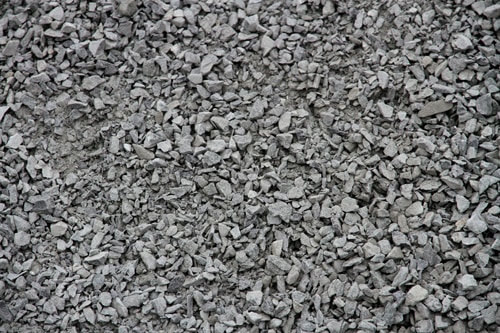
Item #4 Gravel
Another popular gravel frequently used as a foundation for hot tub pads is referred to as Item #4, a mixture of machine-crushed stones that measure the dimensions of a small ball, together with dirt and sand. Item #4 is available in various compositions, including Recycled Item #4, which consists of recycled concrete, blacktop, brick, rock, and alternative stones. Gray Item #4, which is dark gray in appearance. Quarry Item #4, or crushed limestone. Along with Crushed Bluestone Item #4, a darkened blue-gray rock is usually utilized in municipal paving endeavors. No matter its cosmetics, all Item #4 gravel is suitable for the base layer of a hot tub pad.
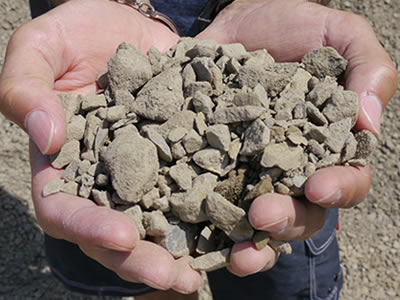
Crushed Stone
The middle type of gravel is generally built of golf-ball-size crushed stone, or #57 stone. This type of gravel, created from machine-crushed stone, is also a favorite selection for landscape design and constructing drains. The size and contour of the rock fragments promote proper drainage and prevent the gravel from attaching to form an impervious surface.
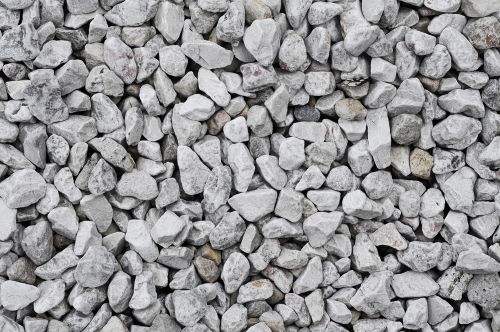
Pea Gravel
An eye-catching solution for the top layer of a hot tub pad, pea gravel comprises naturally weathered rocks that can be small, smooth, and rounded. Pea gravel arrives in an array of colors or multi-colored mixtures and is famous as a top layer because of its attractive look and smooth texture.
One caveat: Since the curved stones do not lock together the same way as angular fragments of crushed stone, pea gravel is much more likely to maneuver away from the pad if kicked or blown around.
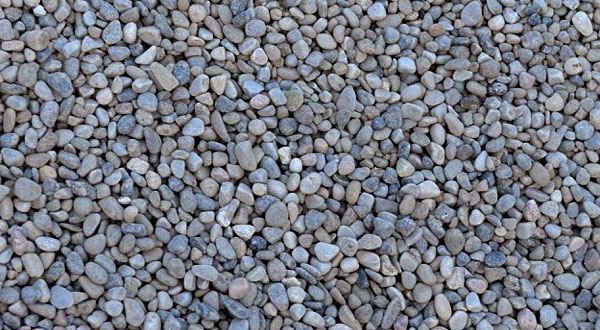
7 Steps to Install a Gravel Pad for a Hot Tub
The seven steps to install a gravel pad for a hot tub are as follows:
1) You will need to understand the dimensions of your hot tub. Measure the hot tub and have exact measurements. You might require a few added feet around the hot tub to set gravel for aesthetic and draining purposes.
I recommend this 25-foot tape measure to help you get started!
2) Decide where you’re going to set the hot tub in the garden. Make dimensions on a lawn utilizing spray paint or string. Make different borders.
3) Now, you will begin digging into the ground to make room for the gravel layers. You need to dig down at least 6 inches with a scoop.
4) Next, place a large piece of landscape material on the bottom of your gravel pit. That is optional but might help with the total look and support of your hot tub base.
5) Fill in the excavated area using gravel. A few people will opt to fill out the gap entirely with medium-grade construction gravel, while others will need a top layer of pea gravel. It’s entirely up to you.
6) In case you are moving the pea gravel, add only 4 inches of medium-grade construction gravel. You will fill the remaining part of the location (two inches) using pea gravel.
7) Lessen the surface with your shovel. The hot tub must sit on an entirely level surface, so take some time to ensure all gravel portions are level and aligned on the corners.
Hot Tub Weight Consideration
An empty hot tub could be surprisingly lightweight since mobile hot tubs are usually composed of vinyl, fiberglass, or acrylic, their design which makes them lightweight. However, once you fill the hot tub up with water and many individuals, the burden can be pretty significant. For this reason, you must consider the load-bearing abilities of where you’re about to locate your hot tub.
Things to Keep in Mind When Installing a Gravel Pad
Always be sure you’re constructing a gravel base on an entirely flat and level surface. Trying to create your base where the ground is bumpy, scenic, or has other deformities may induce the hot tub not to work correctly or be damaged.
Construction gravel isn’t the most gratifying to the eyecatching. You can opt to use this type of gravel to fill the entirety of the base, but the top layer can be made of a different material. If you’d like an even more scenic setting for your hot tub, then fill out the surface with pea gravel or another elegant gravel.
Ensure to be digging at least 6 inches for your base, but only that. Without enough gravel, drainage might also be compromised. With an excessive amount of gravel, the hot tub base might turn out to be overly soft and lead to damage with time.
Also, be sure you have enough room enclosing the hot tub, a relaxing hot tub with a gazebo area to permit the draining. There should be enough space to step out of the hot tub and walk through a few steps before returning to the yard/deck/patio.
The gravel should be level and flat before setting up the hot tub to avoid damage. Take extra care to level it to ensure there are no high spots.
If you’re interested in putting a hot tub on a deck instead, check out our full article on the subject.
Why is a Hot Tub Base Important?
Having a robust and sturdy base will ensure proper waterproofing for the spa, structural integrity, soundproofing, insect protection, and protection from hot and cold temperatures. The base of a hot tub is an essential component of a hot tub and, if built correctly, will prolong the life of the spa.
First of all, there’s your hot tub’s weight and bulk: Even if you obtain a relatively small hot tub, it’s going to weigh thousands of pounds.
After all, only one gallon of water weighs 8.34 pounds. In a conventional 400-gallon hot tub, that happens to be 3,336 lbs of water, not including the hot tub.
A hot tub that weighs thousands of pounds will not sit on a grass or dirt surface. Instead, it will sink significantly, ruining your lawn.
In addition, you ought to think about the damage your hot tub will incur if positioned on grass or dirt in your outdoor space.
Even in arid climates, the soft layers of soil are moist, and over time that moisture will cause damage to your hot tub’s structural integrity.
Remember, hot tubs are intended to hold water. Their outside surfaces are not designed to resist prolonged water exposure.
If you’re interested in knowing more about hot tub installation costs, check out our full article on the subject.
Can You Put a Hot Tub on Gravel Base: Conclusion
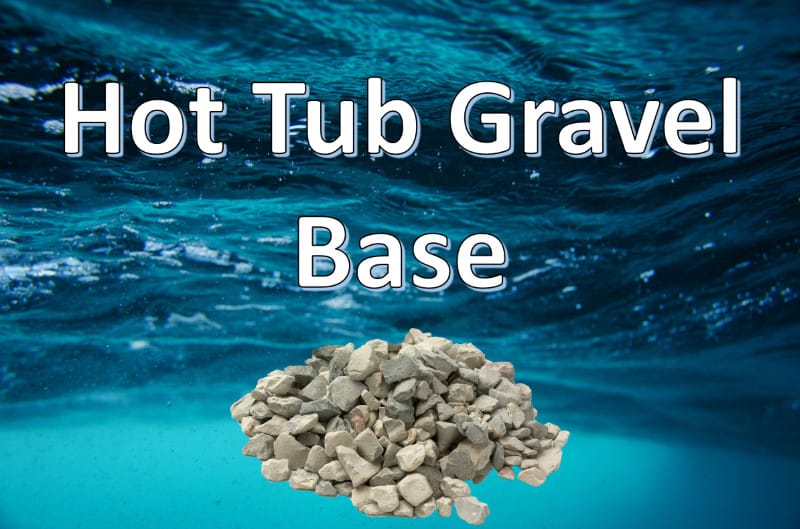
I have that gravel is a great choice for constructing a hot tub base. Gravel is strong, waterproof, weatherproof, and can last a long time. Gravel pads can also support the weight of a hot tub and won’t crack under high pressure compared to concrete.
Many people choose gravel because of the excellent aesthetic look it brings to their outdoor space. It’s clean and looks professional if the base is constructed correctly.
The different types of gravel to use for a hot tub base include base gravel, Item #4, crushed stone, and pea gravel. All with their different pros and cons.
If you’re planning on moving a hot tub to a new location with a gravel pad, check out our article on the subject for more information.
I hope you found this article about “can you put a hot tub on gravel” helpful.
Thanks for visiting spatoolkit.com
James Brockbank

Stop wasting time and money with hot tub maintenance and confusing water chemistry! Get Instant access to this easy-to-use book and video course so you can spend less time cleaning and more time soaking.
Learn More


